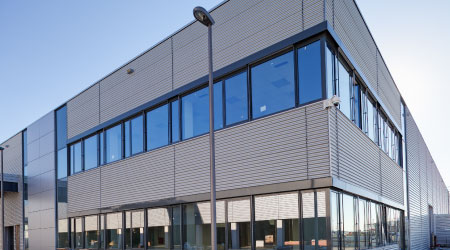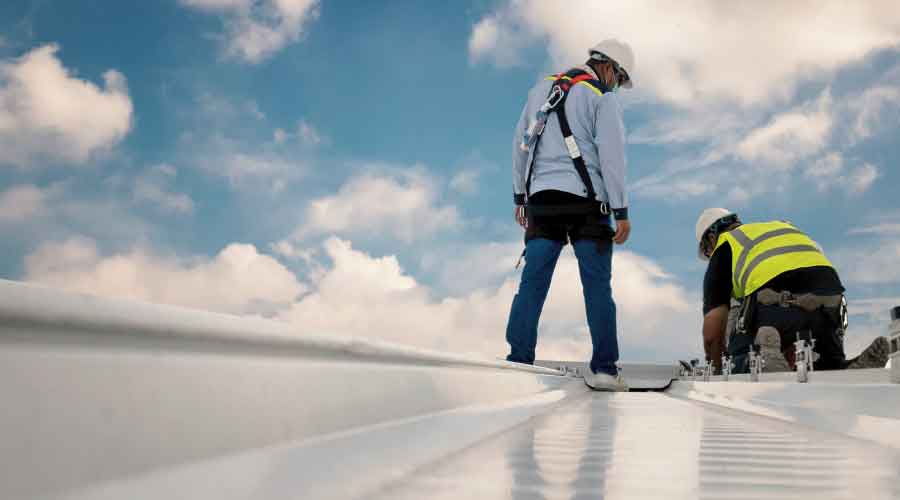Roof Coatings: Installation and Maintenance
Once managers have considered the performance characteristics of roof coatings, they can turn to installation. Choosing an appropriate roof coating that meets the needs of the project is essential for proper installation, so a needs assessment is an excellent starting point.
If the existing roofing system is failing, a high-performance roof coating with fabric reinforcement might be the most appropriate choice. If the system is functional, managers must identify project goals. Are high reflectivity and potential energy savings important? If so, the reflectivity rating or solar reflective index of the coating will be a defining factor during specification.
Once managers have identified a generic product, they must select a manufacturer. The manufacturers of high-performance coatings typically provide lists of trained and approved installation contractors, and a manufacturer's technical representatives can provide site observation and quality-control inspections. Warranty considerations are also important, so managers should carefully review warranty limitations and exclusions.
Important installation parameters include proper surface preparation, application temperature, and temperature trend. For fluid-applied roofing or waterproofing over concrete, the temperature should be within the range prescribed by the manufacturer. The temperature also should be decreasing to prevent moisture within the concrete from rising and creating blisters or pinholes in the coatings.
Installers should apply these coatings over concrete later in the day, when temperatures are decreasing but remain above the dew-point temperature. Some roof coatings are water-soluble while curing, so dew in the evening can cause problems if the product has not fully dried. Manufacturers of water-soluble coatings recommend installing the product in the morning after the surface of existing roofing has dried and temperatures are rising.
With proper planning, quality control during installation, and effective maintenance, applying a roof coating or liquid-applied roofing membrane over the aging roof on a building can extend the roof's service life, save energy, reduce operating and maintenance costs, and contribute to the organization's overall sustainability goals.
Wade L. Vorley, RA, CDT, is an associate at Wiss, Janney, Elstner Associates in Seattle and has provided roofing and waterproofing consulting services in California and the Pacific Northwest for more than 20 years.
Specifier Takeaway
Managers can specify polyurethanes, silicones and some polymer-modified bitumen products as a primary roofing or waterproofing layer, but they do have limits and cannot fix leaks if installed over deteriorated roofs. High-performance membrane products are standalone roofing and waterproofing systems if installed over an approved roof deck with proper ultraviolet protection.
|
Related Topics:













